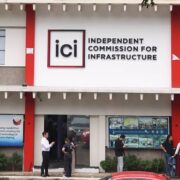A long-overdue airport
The Bulacan Special Economic Zone and Freeport Act, or Republic Act No. 11999, lapsed into law last June 13. It is not just any other proposed ecozone where manufacturing companies locate their operations to get tax incentives. The Bulacan ecozone’s main feature is the $15-billion New Manila International Airport and airport city projects envisioned by conglomerate San Miguel Corp. (SMC) in the town of Bulakan.
One of President Marcos’ actions when he assumed office in June 2022 was to veto the Bulacan ecozone bill due to what he called substantial financial risks to the country. In a letter addressed to members of Congress dated July 1, a day after he was sworn into office, Mr. Marcos pointed out that apart from the fiscal risks, the bill was in conflict with existing mandates of other government agencies and lacked “coherence with existing laws, rules and regulations by failing to provide audit provisions for the Commission on Audit, procedures for the expropriation of lands awarded to agrarian beneficiaries, and a master plan for the specific metes and bounds of the economic zone.”
House ways and means committee chair and Albay Rep. Joey Sarte Salceda, who noted that the President’s concerns were valid, filed a corrected bill addressing the issues raised by Mr. Marcos, while Sen. Grace Poe presented a counterpart version in the Senate in February this year. After “extensive work” that involved consultations with various agencies and Bulacan officials, Salceda said the President apparently saw the merit in the work done “and registered no opposition to this version.”
List of worst airports
Dubbed the “New Manila International Airport,” the project is intended to ease the worsening congestion at the Ninoy Aquino International Airport (Naia), the country’s main gateway for decades that has been criticized by local and foreign travelers and which has often landed on the list of the worst airports in the world. With four runways, eight taxiways, and three passenger terminals with an annual capacity of at least 100 million passengers, or triple that of Naia’s 32 million passengers, it was first proposed in 2016 and completed by the end of this year. As it is, the project is already much delayed, and along with it the possible major solution to the congestion at Naia that has discouraged many tourists from visiting the Philippines and the realization of the economic opportunities to develop Bulacan and nearby provinces of Central Luzon.
Salceda, an economist turned politician, had on many occasions cited the benefits of the entire ecozone, not just the airport. “Within 10 years, this project has the potential to generate P200 billion in export-oriented revenues,” he told fund managers attending a Philippine Stock Exchange forum on capital market reforms last year. At its full potential, the lawmaker said the Bulacan ecozone can generate investments worth $30 billion, P222.6 billion in land value appreciation, and a P10.4-billion increase in government revenues due to the widened tax base.
Elevated toll highway
“Bulacan Airport will be the biggest investment ever made in the Philippines. You can build export industries around it, because airports are now the world’s fastest ports of entry for goods,” he added.
More importantly, he said the Bulacan ecozone will be the first transport-oriented special economic zone in the country. The SMC is constructing the Metro Rail Transit Line 7 that will connect Quezon City to Bulacan, and an elevated toll highway along the Manila Bay shoreline that will extend from Roxas Boulevard in Manila to the Bulacan airport so that travel time can be cut from hours to just a few minutes. In short, the new Bulacan ecozone law will provide the country a chance to do urban planning correctly, according to Salceda. “Naia was a mess. It should not be where it is. We did not build an industrial base around it, or even plan transport and logistics,” Salceda pointed out.
The lapsing into law of the Bulacan ecozone bill will indeed bring a host of benefits not only for the province but for the country as well, especially the tourism sector.
Environment concerns
However, SMC must ensure that it addresses all environmental concerns as it implements the project. As warned by ACT Teachers party list Rep. France Castro, the ecozone project “threatens to displace thousands of fisherfolk families and destroy vital marine ecosystems in Manila Bay. The voices of affected fisherfolk and environmental advocates must be heard and heeded.”
Such concerns are valid. Many projects in the past had promised to address environmental issues simply to get the necessary permits and approvals. Yet after implementation, it would be found out later that those promises had remained unfulfilled. San Miguel has vowed to address these concerns while the ecozone is being built. It is therefore incumbent upon the government and its agencies to ensure that the project’s proponent will actually undertake the measures needed to address the environmental issues—from the beginning to the completion of the airport and the ecozone.

















